We are all aware that coffee and black tea stops you feeling sleepy (after all, that’s why we drink it), but what other foods and drinks are we consuming that might be interfering with our sleep at night?
For example, dark and milk chocolate both contain caffeine, and consuming alcohol, sugary foods and drinks before you sleep can each impact your shut-eye, as can a lack of dietary fibre.
So if you've fired up your sleep tracker and it's showing you that your sleep was less than optimal last night, it might be time to look at your diet to see if there are any culprits for your sub-par shut-eye. After speaking to a nutritionist about the different drinks and foods that help you sleep , we know there's a relationship between the two.
We sleep when a biological chemical called adenosine builds up in our brains, regulated by another chemical called melatonin (this sets our circadian rhythms). Caffeine blocks the receptors for adenosine in our brain and increases adrenaline, the chemical that gives us energy.
In our diet and drinks we often consume carbohydrates which contain sugars, both simple and complex, for energy. These play a role in sleep, with simple sugars being the body’s rapid source of energy when we are fatigued.
These are the sweet-tasting glucose, sucrose and fructose sugars in sweets, cakes, chocolates, sweet fruits and vegetables, and dairy and sweetened milks that give you a sugar high. Research by the Academy of Sleep Medicine shows that eating too many simple sugars at night can reduce sleep. Let's take a closer look at this now...
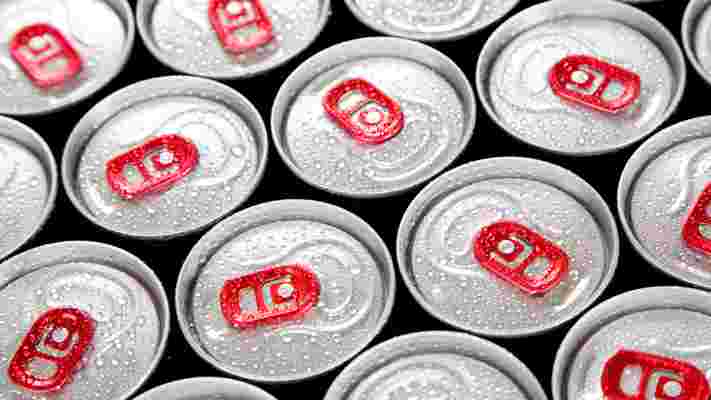
1. Sports drinks
Everyone knows that energy drinks give you, well, energy, but what you may not know is that high-sugar, caffeinated sports drinks can also impact sleep. Their high sugar content causes sugar lows, which make our bodies crave energy giving, high-carbohydrate foods, increasing our appetite.
Our brains respond to this sugar low with adrenaline, which impacts sleep. Additionally, the sugar low, energy crash, post-sugar high increases the likelihood that you'll reach for more caffeine, further impacting sleep.
2. A carb-free diet
Too many carbohydrates can derail a restful night’s sleep. However, too few dietary carbohydrates and our body pumps us with adrenaline energy to make us get up and get food.
Therefore, complex sugars such as dietary fibre and protein-rich foods, which take longer to break down and therefore give us a more sustained energy source, are the best for helping us to sleep.
In 'low fat' foods, the fat is often replaced with either high carbohydrates or sweeteners. Sweeteners can be up to 1000x sweeter than sugar and give us the same energy crashes that make us stressed and hangry, and they also impact sleep.
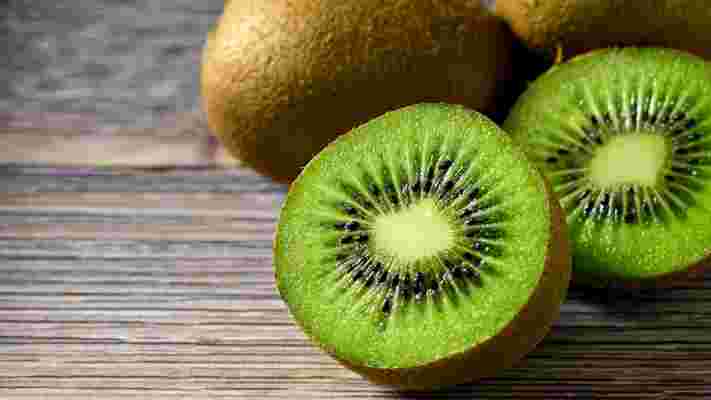
3. Low sugar fruits and vegetables
Vegetables like courgettes, cucumbers, leeks, broccoli, cauliflower, onions, tomatoes, artichokes, green beans, peas, carrots and fruits like berries, kiwis and lemons are perfect for helping you to sleep.
Not only are they complex carbohydrates, they also contain magnesium, a molecule involved in the synthesis of dopamine (our mood chemical), serotonin (the happiness chemical) and melatonin (the sleep regulator), helping us feel calmer and be more resilient to stressors. They also contain lots of fibre for gut health.
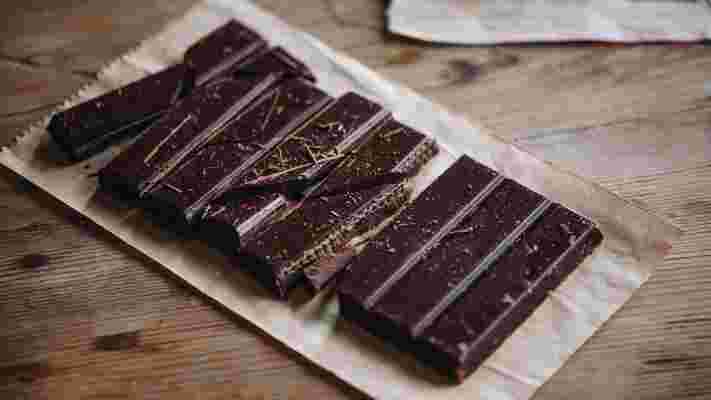
4. Dark Chocolate
Cacao gives us energy due to its sugar content but also because it contains caffeine. The darker the chocolate the more the caffeine content, with one dark chocolate square containing 24mg - that's 1/4 of caffeine in the average 200ml mug of coffee.
If you have four squares, you have had the equivalent of a cup of coffee and it has the same five-hour window within which to be metabolised. This includes energy bars with dark chocolate coating, dark chocolate brownies, as well as cakes and dark drinking chocolate.
5. Insufficient hydration (water)
Studies show that drinking more water makes you feel calmer, improves cognitive performance and improves your mood. Hot water is soothing, and a mug of hot water helps reduce stress and boosts your mood, so its a win-win.
Ideally you should have a glass of water with every meal. Caffeine-free herbal teas, especially those containing chamomile, valerian root, liquorice root, rooibos and ginger are also great before bed. A glass of hot or cold unsweetened soya or nut milk (no sugar here and the high protein aids sleep) is also a great sleep aid.
6. Alcohol
As we learned in our feature on alcohol and sleep , booze disrupts sleep for everyone, and drinking more alcohol on a regular basis does not reduce its effects - this is a classic sleep myth. Alcohol disrupts the Glutamate to Gaba (inhibitory and excitatory chemicals in the brain) balance in the brain.
There are two phases of sleep: SWS (slow wave sleep) and REM (rapid eye movement sleep). Alcohol helps you to rapidly enter SWS but disrupts REM sleep, so you fall asleep faster but have less restful and more disrupted sleep.
How to sleep better at night
Now that you have a better idea of how alcohol, sugar and caffeine affect your sleep, it's time to look at some other quick ways to boost your sleep at night. One of the best ways is to stick to a consistent sleep and wake-up time, and to make sure you fully relax before bed with a proper bedtime routine .
Also ensure you are sleeping on the best mattress for your body type and sleep needs, as an uncomfortable bed can lead to broken sleep as you'll keep waking up to find a comfy new sleeping position. A mattress topper is a good alternative for making older beds softer or firmer as needed.
If you find it hard to rise and shine in the morning, consider investing in a wake-up light to bathe your bedroom in cheery sunshine - it's a far nicer way to wake up compared to a blaring alarm clock.
DISCLAIMER
TechRadar created this content as part of a paid partnership with Nolah Sleep. The contents of this article are entirely independent and solely reflect the editorial opinion of TechRadar.
References:
This article is part of TechRadar's Sleep Awareness Week 2022 celebration (running until Saturday 19 March), a week-long look at all things slumber. We'll be bringing you proven techniques and tips to help you sleep better, and have rounded-up all the top-rated tech to transform your sleep.
Love Disney? You need to hear the lofi Minnie Mouse album on Spotify
Minnie Mouse has released a lofi hip hop album - and it’s an absolute bop. Yes, you read that correctly.
Walt Disney Records has launched a new album of classic Disney songs reimagined in a chill-out beats style, in a bid to appeal to the legions of lofi music fans that use the genre to study, work, and relax.
Lofi Minnie: Focus is heavily influenced by the ever-popular Lofi Girl YouTube channel , which livestreams a playlist of chilled out hip hop beats accompanied by a video of an animated girl studying in her cozy-looking room.
You can get a similar thing from the Disney Music Vevo channel on YouTube, with Minnie relaxing in her room to the reimagined hits (fans of 1995’s A Goofy Movie will immediately notice the large Powerline poster hanging on the wall). The album is also available to play on all the major music streaming services , including Spotify , Apple Music , Deezer , and Tidal .
Using a selection of Minnie Mouse’s favorite songs (that’s everything from The Lion King’s Hakuna Matata to The Little Mermaid’s Under the Sea), the reworked songs sound as nostalgic and familiar as we’d hope - and it works wonderfully for the genre.
Lofi is a genre of music with hip hop, house, and jazz influences, and it’s designed to match the human heart rate with tempos of 70-90 beats per minute - it has a similar vibe to elevator music, with relaxing beats, simple melodies, and nostalgic pops and cracks to evoke the warm sound of a record player or cassette tape. Popularity exploded during the Covid-19 pandemic, reaching Internet meme status as people sought out music to help them unwind and concentrate from their bedrooms.
That nostalgic feel is one of the cornerstones of lofi music, and there’s a veritable rabbit hole of microgenres to get lost in (usually ending in the -wave suffix). Delve into a lofi playlist, and you’ll soon find yourself dipping into vaporwave, which takes influence from 80s and 90s lounge music, consumer capitalism, and glitchy early web design. Dig a little deeper, and you might discover Simpsonwave, a YouTube phenomenon that takes almost hallucinatory soundbites from early Simpsons episodes and lays them over chopped and screwed beats.
Disney, therefore, is the perfect candidate for a lofi makeover, and while the music doesn’t veer too far into the darker, trippier side of the genre, tracks like Hercules’ Go The Distance are transformed by swapping out the Broadway-style vocal for soft keys, synths, and tinny electronic drums.
What about Bruno?
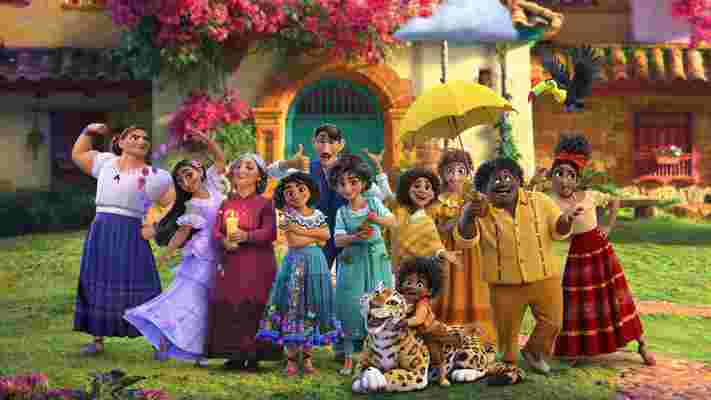
While the tracklisting spans the last 30 years of Disney movies, we were surprised to find that We Don’t Talk About Bruno from Encanto was missing. It’s the first Disney song to reach number one in the charts since Aladdin’s A Whole New World, and the tune has become something of a viral sensation following the film’s release in late 2021.
Perhaps the album makers felt the snappy salsa beats wouldn’t translate well enough into the lofi genre, but it does seem like a missed opportunity.
We’d also like to have seen some songs from Disney’s Golden Age reworked into lofi beats. Sure, lofi music generally takes inspiration from the music of the 80s, 90s, and early noughties, but can you imagine a warbling Snow White vocal laid over some distorted beats and shimmering synths?
If that sounds up your street, you should definitely check out Australian musician Pogo’s YouTube channel . His electronic remixes take stems from Alice In Wonderland, Up, The Little Mermaid, and more. They’re a dream to listen to - and they prove that music makers have been taking inspiration from the Disney catalog long before Minnie jumped on the trend.
This PS5 game might have the worst performance we’ve ever seen
Chrono Cross Remaster on PS5 runs worse than the original PlayStation version, at least in the game’s ‘New Graphics Mode’ – a bizarre feat considering the 28-year gap between the PlayStation 5 and PS One.
The remaster of Chrono Cross, which was released on PS One in 1999 in Japan but never came to Europe, struggles to hit its target frame rate of 30fps, performing significantly worse than the PlayStation original running on almost three-decade-old hardware.
As revealed by Digital Foundry , Chrono Cross: The Radical Dreamers Edition fluctuates wildly from 30fps to as low as 10fps during battles, resulting in a chugging frame rate that is anything but stable. That’s the case for both the PS4 version and when the game is played on PS5 via backward compatibility , which is surprising, to say the least.
The original PS One version manages to outperform the remaster of Square Enix’s classic JRPG in almost every area, apart from the title screen, which obviously shouldn’t be the case.
Thankfully, the remaster’s ‘Classic’ mode matches the performance of the PS One original, though you’d like to think the PS4 and PS5 would be able to run the game at a locked frame rate in this mode.
With a frame rate that barely hits 30fps and visuals that are incredibly basic by today’s standards, Chrono Cross Remaster is easily one of the worst-performing games on PS5 and PS4.
This problem isn't reserved for the PS4 or PS5 versions of Chrono Cross: The Radical Dreamers Edition, though. The same poor performance is present on Nintendo Switch and even on PC. Even a Titan RTX can't overcome the game's unstable frame rate.
An unacceptable port
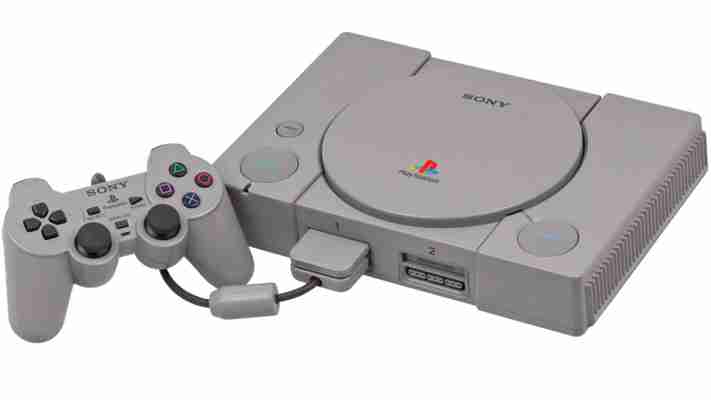
It’s hard to defend the performance of Chrono Cross Remaster, as there’s no reason why a game that is frankly ancient by today’s standards can’t run significantly better on modern hardware. The remaster, even in the new graphics mode, is sparing in its visual upgrades – the game runs at 900p to 936p with a 1080p HUD according to Digital Foundry – so it’s not like we’re seeing a new engine, a 4K resolution or loads of fancy visual effects that could impact frame rate here.
The state of the game will come as a disappointment to European JRPG fans who have waited so long to play Chrono Cross and may have been looking forward to playing a superior version. Unfortunately, though, it’s clear that this isn’t the case, but we can only hope that Square Enix can significantly improve the game’s performance with updates in the future.

